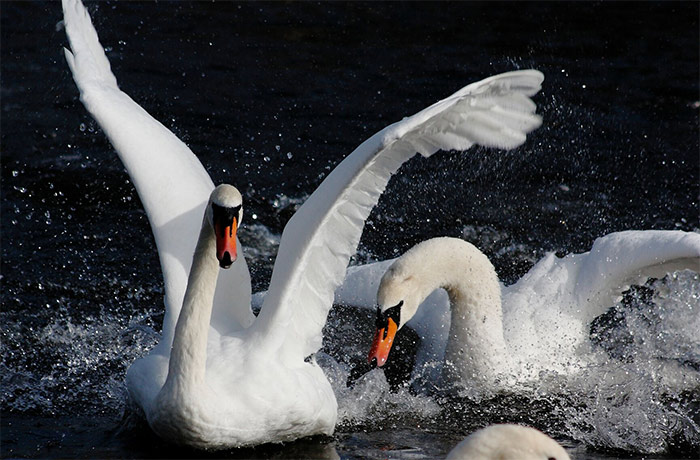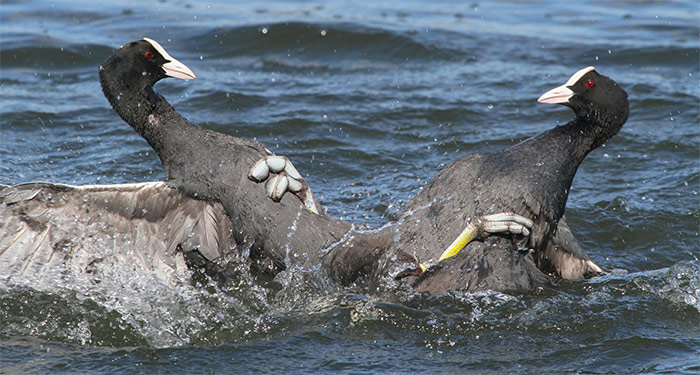Swans unfairly singled out for yobbish behaviour
Mr Asbo and other headline-grabbing swans may be being unfairly stigmatised according to the Wildfowl & Wetlands Trust (WWT), which is behind the world’s largest study of aggression among birds.

The study, published in the scientific journal Animal Behaviour, left researchers under no doubt that some swans are aggressive. However, after studying 555 groups of birds from 65 different species they found that swans are no more or less aggressive than any other birds.
They found that aggressiveness in birds varies hugely, with some individuals spending as much as a third of their lives strutting about and trying to fight their neighbours.
Although there was no significant difference between birds, what does make a difference is being male and an adult. The study confirmed that males are more aggressive than females, and that adults are more aggressive than youngsters, which is to be expected as most of the time it is the adult male that has to win and defend food and nesting sites.
Dr Kevin Wood, Principle Research Officer at the Wildfowl & Wetlands Trust (WWT) led the study. He said:
“At WWT we’re interested in things that spark people’s interest in nature, and aggression is one of those things. It’s not just the perennial stories in the media about aggressive swans, visitors to WWT’s wetland centres frequently comment that they’ve seen birds fighting, so we thought we’d find out the truth behind it.
“We started out with four predictions of things that would affect how aggressive a bird is: its sex, its age, the time of the year and where and how it looked for its food. And after analysing data from species all over the world, we found that it really boils down to being male and adult.
“Swans are no more or less aggro than any other birds we studied. If you wander around WWT’s headquarters at Slimbridge, you’ll notice that’s probably true. You’ll see coots knocking ten bells out of each other, and greylag geese hissing at anything that comes near them.

“These are natural behaviours, and they certainly get people to notice wildlife and think about it. For the birds it’s a way of trying to ensure that they and their family do well in life. But trying to win enough food and a place to live is risky. Pick on the wrong opponent and a bird could be seriously injured or worse. At WWT we do have to step in sometimes when the fights get too rough and feathers start to fly.”
WWT
08 May 2017
Journal reference: Kevin A. Wood, Jessica Pontinga, Nathan D'Costaa, Julia L. Newtha, Paul E. Rosea, b, Peter Glazovc, Eileen C. Reesa; Understanding intrinsic and extrinsic drivers of aggressive behaviour in waterbird assemblages: a meta-analysis; Animal Behaviour, April 2017 DOI: 10.1111/evo.13212






